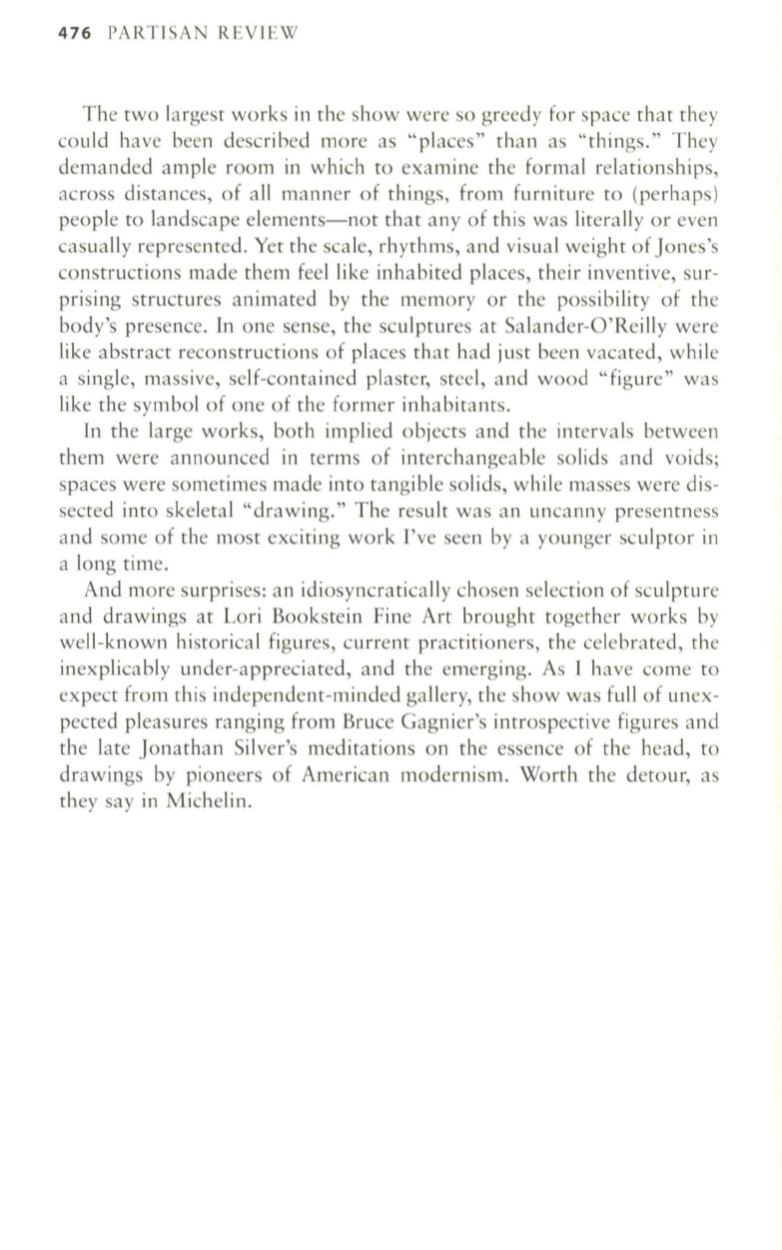
476
PARTISAN REVIEW
The two largest works in the show were so greedy for space that they
could have been described more as "places" than as "things." They
demanded ample room in which to examine the formal relationships,
across distances, of all manner of things, from furniture to (perhaps)
people to landscape elements-not that any of this was literally or even
casually represented. Yet the scale, rhythms, and visual weight of Jones's
constructions made them feel like inhabited places, their inventive, sur–
prising structures animated by the memory or the possibility of the
body's presence. In one sense, the sculptures at Salander-O'Reilly were
like abstract reconstructions of places that had just been vacated, while
a single, massive, self-contained plaster, steel, and wood "figure" was
like the symbol of one of the former inh abitants.
In the large works, both implied objects and the intervals between
them were announced in terms of interchangeable sol ids and voids;
spaces were sometimes made into tangible solids, while masses were dis–
sected into skeleta l "drawing." The result was an uncanny presentness
and some of the most exciting work I've seen by a younger sculptor in
a long time.
And more surprises: an idiosyncratically chosen selection of sculpture
and drawings at Lori Bookstein Fine Art brought together works by
well-known historical figures, current practitioners, the ce lebrated, the
inexplicably under-appreciated, and the emerging. As I have come to
expect from this independent-minded ga ll ery, the show was full of unex–
pected pleasures ranging from Bruce Gagnier's introspective figures and
the late Jonathan Silver's meditations on the essence of the head, to
drawings by pioneers of American modernism. Worth the detour, as
they say in Michelin.


